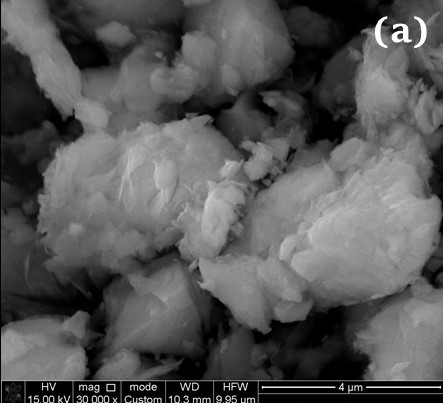
The effect of ammonia activation on the desalination potential of natural zeolite
Abstract
Keywords
Full Text:
PDFReferences
Burn S, Hoang M, Zarzo D, Olewniak F, Campos E, Bolto B, Barron O. Desalination techniques – A review of the opportunities for desalination in agriculture. Desalination. 2015;364:2–16. doi:10.1016/j.desal.2015.01.041
Jones E, Qadir M, van Vliet MTH, Smakhtin V, Kang S. The state of desalination and brine production: A global outlook. Sci Total Environ. 2019;657:1343–1356. doi:10.1016/j.scitotenv.2018.12.076
Sharma S, Bhattacharya A. Drinking water contamination and treatment techniques. Appl Water Sci. 2017;7:1043–1067. doi:10.1007/s13201-016-0455-7
Darre NC, Toor GS. Desalination of Water: a Review. Curr Pollution Rep. 2018;4:104–111. doi:10.1007/s40726-018-0085-9
Elsaid K, Kamil M, Sayed ET, Abdelkareem MA, Wilberforce T, Olabi A. Environmental impact of desalination technologies: A review. Sci Total Environ. 2020;748. doi:10.1016/j.scitotenv.2020.141528
Zotalis K, Dialynas EG, Mamassis N, Angelakis AN. Desalination technologies: Hellenic experience. Water. 2014;6:1134–1150. doi:10.3390/w6051134
Curto D, Franzitta V, Guercio A. A review of the water desalination technologies. Appl Sci. 2021;11:1–36. doi:10.3390/app11020670
Pearce M, Brennan F. Novel findings in desalination. Desalination. 2015;360:13–18. doi:10.1016/j.desal.2014.12.020
Shah KM, Billinge IH, Chen X, Fan HQ, Huang YX, Winton RK, Yip NY. Drivers, challenges, and emerging technologies for desalination of high-salinity brines: A critical review. Desalination. 2022;538:115827. doi:10.1016/j.desal.2022.115827
Aende A, Gardy J, Hassanpour A. Seawater desalination: a review of forward osmosis technique, its challenges, and future prospects. 2020;8(8):901. doi:10.3390/pr8080901
Bone SE, Steinruck HG, Toney MF. Advanced characterization in clean water technologies. Joule. 2020;4(8):1637–1659. doi:10.1016/j.joule.2020.06.020
Ray SS, Chen SS, Sangeetha D, Chang HM, Thanh CND, Le QH, Ku HM. Developments in forward osmosis and membrane distillation for desalination of waters. Environ Chem Lett. 2018;16(4):1247–1265. doi:10.1007/s10311-018-0750-7
Ghalavanda Y, Hatamipoura MS, Rahimia A. A review on energy consumption of desalination processes. Desalin Water Treat. 2014;54(6):1526–1541. doi:10.1080/19443994.2014.892837
Shahmirzadi MAA, Hosseini SS, Luo JQ, Ortiz I. Significance, evolution and recent advances in adsorption technology, materials and processes for desalination, water softening and salt removal. J Environ Manage. 2018;215:324–344. doi:10.1016/j.jenvman.2018.03.040
Ng KC, Thu K, Kim Y, Chakraborty A, Amy G. Adsorption desalination: An emerging low-cost thermal desalination method. Desalination. 2013;318:161–179. doi:10.1016/j.desal.2012.07.030
Baile P, Fernandez E, Vidal L, Canals A. Zeolites and zeolite-based materials in extraction and microextraction techniques. Analyst. 2019;144(2):366–387. doi:10.1039/c8an01194j
Wibowo E, Rokhmat M, Khairurrijal S, Abdullah M. Reduction of seawater salinity by natural zeolite (Clinoptilolite): Adsorption isotherms, thermodynamics and kinetics. Desalination. 2017;409:146–156. doi:10.1016/j.desal.2017.01.026
Paul B, Dynes JJ, Chang W. Modified zeolite adsorbents for the remediation of potash brine-impacted groundwater: Built-in dual functions for desalination and pH neutralization. Desalination. 2017;419:141–151. doi:10.1016/j.desal.2017.06.009
Alsaman AS, Askalany AA, Ibrahim EMM, Farid AM, Ali ES, Ahmed MS. Characterization and cost analysis of a modified silica gel-based adsorption desalination application. J Clean Prod. 2022;379:134614. doi:10.1016/j.jclepro.2022.134614
Alsaman AS, Ibrahim EMM, Askalany AA, Farid AM, Ali ES, Ahmed MS. Composite material-based a clay for adsorption desalination and cooling applications. Chem Eng Res Des. 2022;188:417–432. doi:10.1016/j.cherd.2022.09.017
Guo XF, Ji ZY, Yuan JS, Zhao YY, Liu J. Recovery of K+ from concentrates from brackish and seawater desalination with modified clinoptilolite. Desalin Water Treat. 2016;579160:6829–6837. doi:10.1080/19443994.2015.1010590
Paul B, Dynes JJ, Chang W. Modified zeolite adsorbents for the remediation of potash brine-impacted groundwater: Built-in dual functions for desalination and pH neutralization. Desalination. 2017;419:141–151. doi:10.1016/j.desal.2017.06.009
Gibb NP, Dynes JJ, Chang W. Synergistic desalination of potash brine-impacted groundwater using a dual adsorbent. Sci Total Environ. 2017:593–594:99–108. doi:10.1016/j.scitotenv.2017.03.139
Kragovic M, Pasalic S, Markovic M, Petrovic M, Nedeljkovic B, Momcilovic M, Stojmenovic M. Natural and modified zeolite-alginate composites. Application for removal of heavy metal Cations from contaminated water solutions. Minerals. 2018;8(1):11. doi:10.3390/min8010011
DOI: https://doi.org/10.15826/chimtech.2023.10.3.05
Copyright (c) 2023 Aruzhan K. Kenessova, Akmaral B. Rakhym, Bagashar B. Zhaksybay, Gulziya A. Seilkhanova

This work is licensed under a Creative Commons Attribution 4.0 International License.
Chimica Techno Acta, 2014–2025
eISSN 2411-1414
Copyright Notice







